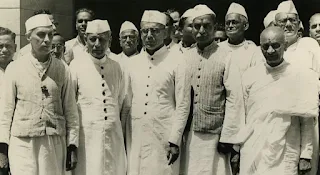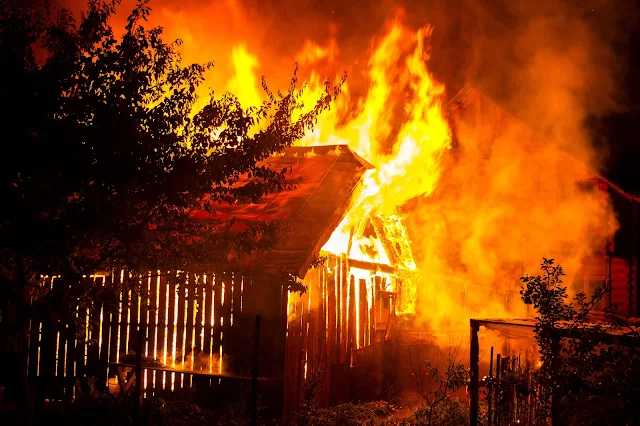Intellectuals of a society are its leading lights; not weathervanes!
 |
In a speech delivered in Bristol in 1780, Edmund Burke
told his constituents
“I did not obey your instructions: No. I conformed to the instructions of truth and nature, and maintained your interest, against your opinions, with a constancy that became me.”
He was elected to the parliament from the city in 1774 and was seeking reelection. Bromwich, Burke’s biographer observed:
“Like Shakespeare, Burke knew the glamour and influence of the Machiavellian morality, in politics and in smaller-scale, human wheeling and dealing.”
Leadership literature has an unverified story that explains the seamy side of leadership of mass movements. During the days of the French revolution, so goes the story, a newspaperman was having a tête-à-tête with a leader of the revolution in a Paris café. As they were sipping coffee and chatting, a wildly howling mob screaming slogans stomped by. The newspaperman wondered what the procession was all about. On hearing this, the ‘leader’ shouted “Oh my God, I am supposed to the lead the procession” and ran out!
Burke risked his electorate’s possible displeasure in choosing intellectual integrity. In a benign era in which the electorate was not corrupted by Machiavellian morality, his candour was appreciated! In a polity as fractured by caste and creed as India’s, with rare exceptions, politicians tend to choose Machiavellian morality over intellectual integrity.
The biggest failure of ‘public intellectuals’ in India is their inability to forge national unity based on a society that does not think in terms of castes and creeds. In a 1954 judgement, the Supreme Court expressed its fervent hope that the Indian Constitution would bring about a
“[…] new order … with its new allegiance springing from the same source for all, grounded on the same basis: the sovereign will of the peoples of India with no class, no caste, no race, no creed, no distinction, no reservation.”
The Supreme Court, it appears, was carried away with its own rhetorical flourishes in pluralizing ‘people’, and the reinforcing qualifier at the end of the sentence.
The phrase ‘public intellectual’ was coined by Russell Jacoby in his 1987 book, “The Last Intellectuals”. Absorbed as the Indians were in ‘divisive’ versus ‘integrative’ polemics, there has not been much debate on the role of ‘public intellectuals’ or rather the sad scarcity of balanced public intellectual discourse. The words ‘divisive’ and ‘integrative’ too have diametrically opposing connotations based on from which perspective they are looked at! Jacoby observed
“[…] intellectuals, if noticed, are usually blessed or subsidized…and one consequence—at least—unnoticed and profoundly damaging: the impoverishment of public culture”.
A scan of the articles on ‘public intellectuals’ in India leads one to believe there are public intellectuals only on one side of the ideological divide. For some strange reason, even the thought of ‘public intellectuals’ throws up unintelligible gobbledygook. Just look at this passage from an article on the subject in an Indian daily:
“[…] public intellectuals in India need to challenge the traditional assumptions that have reinforced positivistic methodologies, apathetic scholarship and an increasing fascination with a calculative leadership”!
Whatever did it mean! The picture that accompanied the article leaves no one in doubt about ‘the necessary and sufficient condition that should be satisfied to earn the label ‘public intellectual’. Indeed, intellectuals have to be blessed or subsidized to be noticed! A far more serious problem as Richard Posner observed is with ‘public intellectuals’ who “bend facts and law to fit their political preconceptions”.
There are several issues over which ‘public intellectuals’ could have educated, enlightened and shaped public opinion. On the issue of forging unity of castes and creeds, making splintering a virtue as ‘unity in diversity’ appears a bit tenuous or worse disingenuous. It suits the politicians to reap electoral dividends by manipulating divisions, fueling dissensions, pitting one group against the other, or by incentivizing divisions, but why should ‘public intellectuals’ legitimize the political line with tortuous Op-Eds? There are internal divisions in many countries but they do not go to town preening about diversity. They function as a united nation within and outside and not as a ‘united nations organization’!
Or take the current craze of electoral sops. Politicians do not mind the long-term damage their promised sops are likely to do to the economy as long as they help them to win. When revenues plummeted during the Covid pandemic, a regional politician who made a fine art of governing his state through sops asked “Why doesn’t the Central government print more currency to meet the demand?” Consumed by the desire to perpetuate his rule he offered a sop for every conceivable section of society that can vote in bulk. As a result, the state is languishing without development or servicing of infrastructure projects. This is the same case in several states where politicians usurped power by offering sops. Their leaders now lament that they are not able to answer their publics on the lack of development.
The Indian government must be commended for its fiscal prudence in not succumbing to the temptation of issuing paper money. On the other hand, the USA—whose nationals earned the maximum number of economics Nobels—put the idea into practice by printing an additional $3 trillion! The government hoped it would help borrowers by easing interest rates. It did for a while. Stock market indices zoomed. But the extra money supply could be helpful only if there is a corresponding increase in production. It was too late for the decision makers to realize that too much money chasing too few goods would result in high inflation in the long-term, consequent rise in interest rates (negating their original intention) and market volatility. In fact, following the infusion of paper money into circulation the United States saw the highest inflation rate in four decades. Does the American experience hold any lessons for the Indian politicians? Going by the vigour with which most Indian politicians are indulging in competitive populism they do not seem to be even aware of it.
This article was first published in the Times Of India Blogs




